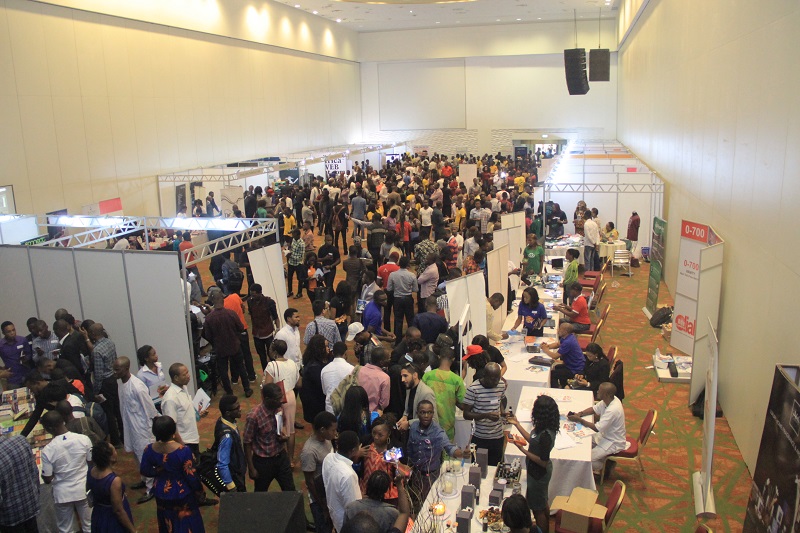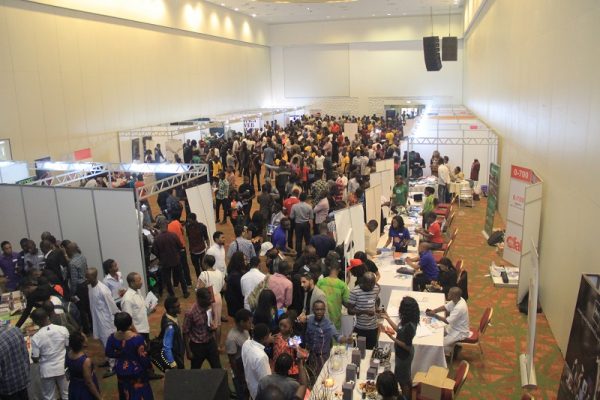Exhibitions are great ways to give your brand the exposure you want for it. When such events go well, the businesses in attendance are able to sell significant volumes of their products to the people in attendance; they may also gather a good number of useful leads and capture new, long-term customers. Mutually beneficial business contacts are made, and strong commercial networks are established and strengthened. One of such exhibition events, the Connect Nigeria eBusiness Fair, has been giving SMEs in Nigeria the platform to expand their market reach for several years.
Sometimes, exhibitions don’t yield the desired results for businesses, but this isn’t necessarily the fault of the event’s organizers. In many cases, low patronage and logistics issues are really, results of a failure on the part of the exhibiting businesses to properly plan their appearance at the show beforehand.
If you want your exhibition to achieve the aims you set for it- whether it be greater exposure or one-time big sales -you should take the following steps to set your business up for success at it.
Pre-exhibition
-
Clearly, define your purpose for exhibiting
Businesses choose to exhibit at trade shows for a variety of reasons. Top of the list includes brand exposure and the prospect for sales. But there’s more to gain at such events. You could find new ideas from others that you could use at your own venture; you might also make alliances with new partners, client companies and suppliers. Whatever your reasons for going are, be sure to lay them out clearly. They’ll help you set targets and plan appropriately for the exhibition.
There’s also the specific question about attending particular business fairs. No two trade exhibitions are the same; this is why you need to inquire about the exhibition you intend to go for. Find out what sort of people have attended the event in the past (i.e. demographic characteristics), and ask the organizers about the kind of exhibitors they’ve had at previous fairs, and are expecting for the coming one. The information garnered from this investigation should aid you in deciding, whether the fair you’re considering can achieve what you want from it.
-
Write an exhibition plan
Many businesses are just content with showing up at the exhibition venue, armed with props, an intention to sell and do deals, and not much else. Planning begins to take shape as the exhibition booth is being set up, and is concluded midway through the event. This might work sometimes, but it’s not a recipe for the greatest possible success. It’s better to take some time to decide how the whole exhibition thing is going to run. An exhibition plan should include, among other things, a budget for the event, including expected profits. Plans for staffing, materials, marketing, and record keeping procedure for activities and equipment should all be factored in.
The exhibition plan is best written several months before the event (which means you should register for the event as early as possible). This will give you ample time to execute your plans in a measured, deliberate way and reduce the possibility of mistakes brought about by a fire-brigade approach to preparation.
-
Arrange for materials and equipment
Have a picture in your mind of what you would like your exhibition stand to look like: display tables, products, brochures and leaflets, roll-up banners, lighting, etc. Discuss the details of this with members of staff, especially with department heads. Contact suppliers, set deadlines for the delivery of materials, and keep tabs on the work being done by those contracted to provide the required items. Decide what products will be displayed on-stand, and how they will be arranged. Don’t forget to print the forms you’ll need for collecting contact details of visitors to your booth (especially real leads).
Equipment such as computers, tablets and digital cameras (if needed) should also be procured or gotten ready for use at least a week before the fair.
If the event will be happening in a location that is far enough to require you passing nights away from your home or office, you should make sure that transportation (and accommodation) arrangements are in place. Of course, this also applies to shorter distance trips, but it wouldn’t require as much time to prepare for in this instance.
- Train and assign roles to staff
Pre-show, in-show and post-show duties should be allocated to staff, before the buildup to the exhibition begins. This will make it less likely for them to get roles mixed up, or neglect aspects of the whole planning and execution process. Success is easier to achieve if everyone knows what they will be handling long before they have to do so.
At the exhibition
- Survey the venue
Get to know the location of the exhibition. If you can, you should do this days or weeks before the event. Multiple trips to the proposed venue for the exhibition isn’t out of place. If you and your staff are able to know the area well enough before the fair begins, you’re less likely to have logistic challenges associated with location issues. It’ll save you time, and possibly even resources and opportunities.
-
On-site preparation
This includes a general briefing for your staff at the venue of the exhibition, just before the event kicks off. The purpose of this is to be clear that everyone knows what their roles will be, and how their work should be carried out.
Ensure that materials and equipment required at the stand are on site hours before the event commences. Supervise set-up, and get in touch with electricians if there’s an early detection of electrical/wiring faults. Hand over team badges (and other forms of identification) to your on-site staff.
Test your equipment to ensure that they’re good to go.
-
Exhibition proper
This is where the worth of months-long work proves itself.
When people begin to trickle (or pour) through the lanes of the exhibition centre, your staff at the booth should be on hand to welcome them. If some of your staff will be interacting with people elsewhere at the exhibition, you may want to have them don some visible form of identification- an ID card hung on their chest, or maybe even a smart shirt bearing your company’s logo. They, as well as their colleagues at the booth, should be armed with courtesy, charm, and a good knowledge of what your company is and does. This combination will help you make the most of any exhibition.


